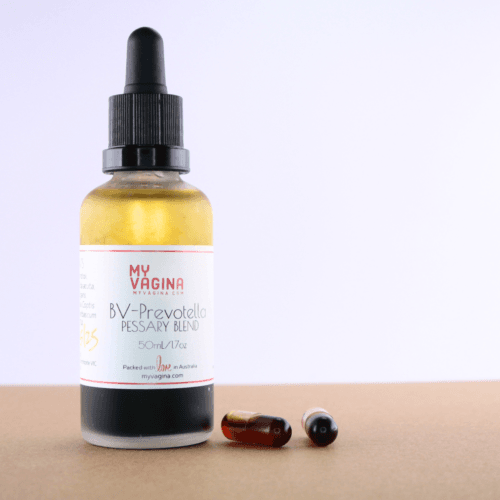Hi Aunt Vadge, how do I treat BV caused by Prevotella?
From,
Jay
Age 29, NJ USA
_______________________
Hey Jay,
Prevotella is known for being inflammatory and antibiotic resistant, so can be – in significant enough numbers – a big player in bacterial vaginosis (BV) symptoms. But, significant can mean around 10% or more of these species. Anything less doesn’t tend to cause the same symptoms.
Prevotella is famous for causing an ammonia-like or cleaning product vaginal odour, because it produces a lot of ammonia. It is often found with other species, such as Gardnerella.
One of the main vaginal Prevotella species, Prevotella timonensis, has been reclassified as Hoylesella timonensis, which you might see on your Juno or other vaginal microbiome reports.
Targets BV with Prevotella and Hoylesella, supporting restoration of a protective microbiome.
The most comprehensive vaginal microbiome test you can take at home, brought to you by world-leading vaginal microbiome scientists at Juno Bio.
Non-drug natural Prevotella dominant BV treatment
Here at My Vagina, we have developed a Prevotella-specific vaginal treatment to help reduce inflammation and restore a healthy vaginal microbiome: Aunt Vadge’s BV-Prevella Clear.
When it comes to dealing with Prevotella, every ingredient counts, which is why we’ve so carefully developed Aunt Vadge’s BV-Prevella Clear.
Antibiotic treatments for BV caused by Prevotella species
If you are going down the antibiotic route, Prevotella species respond (at least for now) to metronidazole, amoxicillin/clavulanate, ureidopenicillins, carbapenems, cephalosporins, clindamycin, and chloramphenicol. Prevotella may have increased b-Lactamase activity, making some species resistant to b-lactam antibiotics.
Some antibiotics, like aminoglycosides, trimethoprim/sulfamethoxazole, and quinolones, might actually worsen a Prevotella infection.
What to do next to treat BV caused by Prevotella species
If you’re not getting the results you’re after from Aunt Vadge’s BV-Prevella Clear in 3-4 weeks, I strongly recommend booking with a My Vagina clinical naturopath for pesonalised advice and treatments.
If the treatment isn’t working as planned, it’s usually because the microbiome imbalance is being driven by another part of your system that isn’t doing so well. We can help work out what that is, and treat the underlying causes of vaginal microbiome disturbances, and clear your symptoms.
You’re not alone! We can help.
Best,
Aunt Vadge
The most comprehensive vaginal microbiome test you can take at home, brought to you by world-leading vaginal microbiome scientists at Juno Bio.
Unique, comprehensive BV, AV and 'mystery bad vag' treatment guide, one-of-a-kind system, with effective, innovative treatments.
Promote and support a protective vaginal microbiome with tailored probiotic species.







